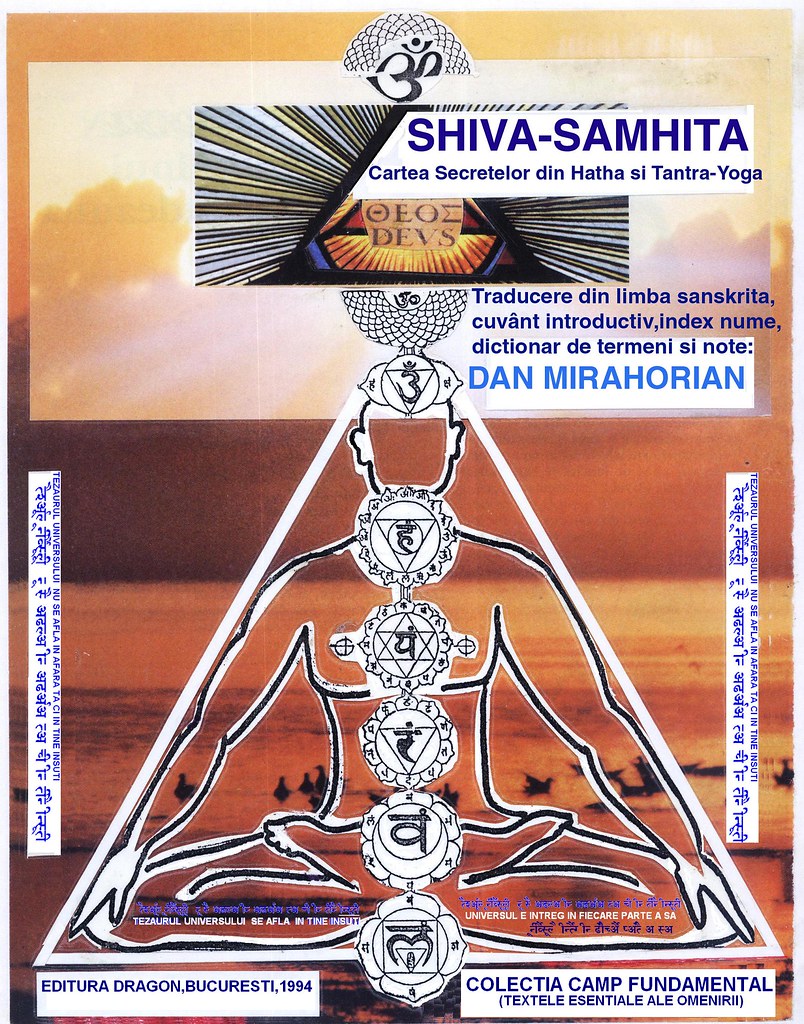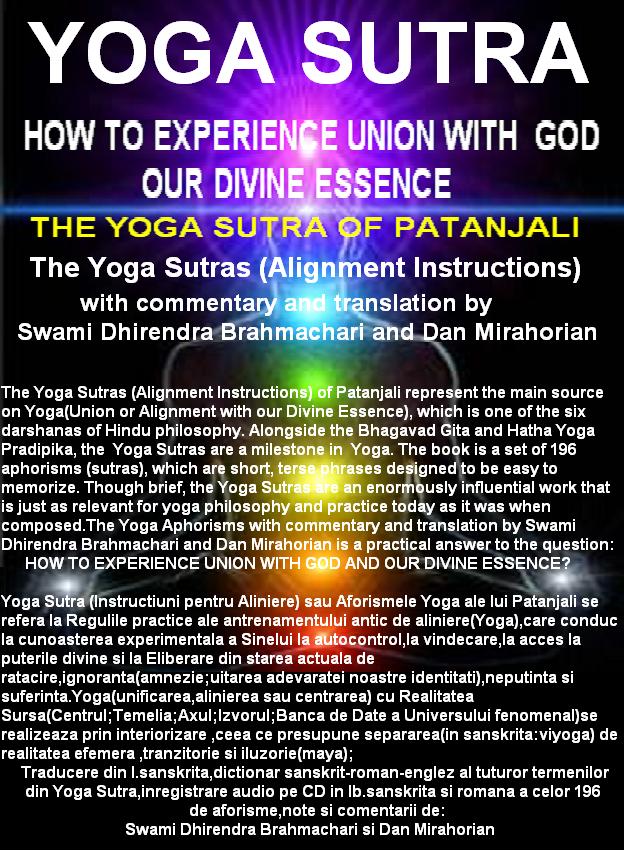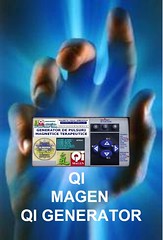MIRAHORIAN: GUIDED AWAKENING/TREZIRE PILOTATA
Vedeti mai jos cartea lui Bates

In 1978, after the copyright on the original edition had expired,
Health Research Books began to sell reprints, which are still available.
Except where noted, this electronic version contains the entire text of the original edition.
- Front Matter
- Preface
- Contents
- List of Illustrations
- Chapter I: Introductory Prevalence of errors of refraction - Believed to be incurable and practically unpreventable - The eye regarded as a blunder of Nature - Facts which seem to justify this conclusion - Failure of all efforts to prevent the development of eye defects - Futility of prevailing methods of treatment - Conflict of facts with the theory of incurability of errors of refraction - These facts commonly explained away or ignored - The author unable to ignore them, or to accept current explanations - Finally forced to reject accepted theories.
- Chapter II: Simultaneous Retinoscopy Retinoscopy the source of much of the information presented in this book - What the retinoscope is - Its possibilities not realized - Commonly used only under artificial conditions - Used by the author under the conditions of life on human beings and the lower animals - Thus many new facts were discovered - Conflict of these facts with accepted theories - Resulting investigations.
- Chapter III: Evidence for the Accepted Theory of Accommodation Development of the theory - Behavior of the lens in accommodation as noted by Helmholtz - General acceptance of these observations as facts - Abandonment by Arlt of the true explanation of accommodation - Inability of Helmholtz to explain satisfactorily the supposed change of form in the lens - Question still unsettled - Apparent accommodation in lensless eyes - Curious and unscientific theories advanced to account for it - Voluntary production of astigmatism - Impossibility of reconciling it with the theory of an inextensible eyeball.
- Chapter IV: The Truth about Accommodation as Demonstrated by Experiments on the Eye Muscles of Fish, Cats, Dogs, Rabbits and Other Animals Disputed function of the external muscles of the eyeball - Once regarded as possible factors in accommodation - This idea dismissed after supposed demonstration that accommodation depends upon the lens - Author's experiments demonstrate that accommodation depends wholly upon these muscles - Accommodation prevented and produced at will by their manipulation - Also errors of refraction - The oblique muscles of accommodation - The recti concerned in the production of hypermetropia and astigmatism - No accommodation with one oblique cut, paralyzed, or absent - Paralysis of accommodation in experimental animals accomplished only by injection of atropine deep into the orbit, so as to reach the oblique muscles - Accommodation unaffected by removal of the lens - Fourth cranial nerve supplying superior oblique muscle a nerve of accommodation - Sources of error believed to have been eliminated in experiments.
- Chapter V: The Truth about Accommodation as Demonstrated by a Study of Images Reflected from the Lens, Cornea, Iris and Sclera Technique of Helmholtz defective - Image obtained by his method on the front of the lens not sufficiently distinct or stable to be measured - Failure of author to get reliable image with various sources of light - Success with 1,000-watt lamp, diaphragm and condenser - Image photographed - Images on cornea, iris, lens and sclera also photographed - Results confirmed earlier observations - Eyeball changes its shape during accommodation - Lens does not - Strain to see at near-point produces hypermetropia - Strain to see at distance myopia - Method of obtaining the corneal image.
- Chapter VI: The Truth about Accommodation as Demonstrated by Clinical Observations Results of experimental work confirmed by clinical observations - Atropine supposed to prevent accommodation - Conflict of facts with this theory - Normal accommodation observed in eyes under influence of atropine for long periods - Evidence of these cases against accepted theories overwhelming - Cases of accommodation in lensless eyes observed by author - Reality of the apparent act of accommodation demonstrated by the retinoscope - Evidence from the cure of presbyopia - Harmony of all clinical observations with views of accommodation and errors of refraction presented in this book.
- Chapter VII: The Variability of the Refraction of the Eye Refractive states supposed to be permanent - Retinoscope demonstrates the contrary - Normal sight never continuous - Refractive errors always changing - Conditions which produce errors of refraction - Variability of refractive states the cause of many accidents - Also of much statistical confusion.
- Chapter XII: What Glasses Do to Us The sins of Salvino degli Armati, reputed inventor of spectacles - How glasses harm the eyes - Sight never improved by them to normal - Always resented at first by the eye - Objects of vision distorted by them - Disagreeable sensations produced - Field of vision contracted - Difficulty of keeping the glass clean - Reflection of light from lenses annoying and dangerous - Inconvenience of glasses to physically active persons - Effect on personal appearance - No muscular strain relieved by them - Apparent benefits often due to mental suggestion - Fortunate that many patients refuse to wear them - At best an unsatisfactory substitute for normal sight.
- Chapter IX: Cause and Cure of Errors of Refraction All abnormal action of external muscles of the eyeball accompanied by a strain to see - With relief of this strain all errors of refraction disappear - Myopia (or lessening of hypermetropia) associated with strain to see at the distance - Hypermetropia (or lessening of myopia) associated with strain to see at the near-point - Facts easily demonstrated by retinoscope - Effect of strain at the near-point accounts for apparent loss of accommodation in the lensless eye - Mental origin of eyestrain - Accounts for effect of civilization on the eye - Lower animals affected as man is - Remedy to get rid of mental strain - Temporary relaxation easy - Permanent relaxation may be difficult - Eyes not rested by sleep or tired by use - Rested only by resting the mind - Time required for a cure.
- Chapter X: Strain Foundation of the strain to see - Act of seeing passive - Same true of action of all sensory nerves - Their efficiency impaired when made the subject of effort - The mind the source of all such efforts brought to bear upon the eye - Mental strain of any kind produces eyestrain - This strain takes many forms - Results in production of many abnormal conditions - Circulation disturbed by strain - Normal circulation restored by mental control - Thus errors of refraction and other abnormal conditions are cured.
- Chapter XI: Central Fixation The center of sight - The eye normally sees one part of everything it looks at best - Central fixation lost in all abnormal conditions of the eye - Cause of mental strain - With central fixation the eye is perfectly at rest - Can be used indefinitely without fatigue - Open and quiet - No wrinkles or dark circles around it - Visual axes parallel - With eccentric fixation the contrary is the case - Eccentric fixation cured by any method that relieves strain - Limits of vision determined by central fixation - Organic diseases relieved or cured by it - No limit can be set to its possibilities - Relation to general efficiency and general health.
- Chapter XII: Palming Relaxation with the eyes shut - With light excluded by palms of the hands (palming) - Evidence of complete relaxation in palming - Of incomplete relaxation - Difficulties of palming - How dealt with - Futility of effort - All the sensory nerves relaxed by successful palming - Pain relieved in all parts of the body - Patients who succeed at once are quickly cured- A minority not helped and should try other methods.
- Chapter XIII: Memory As an Aid to Vision Memory a test of relaxation - Memory of black most suitable for the purpose - Application of this fact to treatment of functional eye troubles - Sensation not a reliable index of strain - Memory of black is - Enables the patient to avoid conditions that produce strain - Conditions favorable to memory - Retention of memory under unfavorable conditions - Quick cures by its aid - A great help to other mental processes - Tests of a perfect memory.
- Chapter XIV: Imagination As an Aid to Vision Retinal impressions interpreted by the mind - Memory or imagination normally used as an aid to sight - In imperfect sight the mind adds imperfections to the imperfect retinal image - Only a small part of the phenomena of refractive errors accounted for by the inaccuracy of the focus - Difference between the photographic picture when the camera is out of focus and the visual impressions of the mind when the eye is out of focus - Patients helped by understanding of this fact - Dependence of imagination upon memory - Coincidence of both with sight - Perfect imagination dependent upon relaxation - Therefore imagination cures - Method of using it for this purpose - Remarkable cures effected by it.
- Chapter XV: Shifting and Swinging Apparent movement of objects regarded with normal vision - Due to unconscious shifting of the eye - Impossibility of fixing a point for an appreciable length of time - Lowering of vision by attempt to do so - Inconspicuousness of normal shifting - Its incredible rapidity - Staring an important factor in the production of imperfect sight - Tendency to stare corrected by conscious shifting and realization of apparent movement resulting from it - Conditions of success with shifting - The universal swing - Methods of shifting - Cures effected by this means.
- Chapter XVI: The Illusions of Imperfect and of Normal Sight Normal and abnormal illusions - Illusions of color - Of size - Of form - Of number - Of location - Of nonexistent objects - Of complementary colors - Of the color of the sun - Blind spots - Twinkling stars - Cause of illusions of imperfect sight - Voluntary production of illusions - Illusions of central fixation - Normal illusions of color - Illusions produced by shifting - The upright position of objects regarded an illusion.
- Chapter XVII: Vision Under Adverse Conditions a Benefit to the Eye* Erroneous ideas of ocular hygiene - Conditions supposedly injurious may be a benefit to the eye - No foundation for universal fear of the light - Of looking at a strong electric light - Not light but darkness a danger to the eye - Sudden contrasts of light may be beneficial - Advantages of the movies - Benefits of reading fine print - Reading in moving vehicles - In a recumbent posture - Vision under difficult conditions good mental training.
- Chapter XVIII: Optimums and Pessimums All objects not seen equally well when sight is imperfect - The eye has its optimums and pessimums - Some easily accounted for - Others unaccountable - Familiar objects optimums - Unfamiliar objects pessimums - Examples of unaccountable optimums and pessimums - Variability of optimums and pessimums - Test card usually a pessimum - Pessimums which the patient is not conscious of seeing - Pessimums associated with a strain to see - How pessimums may become optimums.
- Chapter XVIXThe Relief of Pain and Other Symptoms by the Aid of the Memory No pain felt when the memory is perfect - All the senses improved - Efficiency of the mind increased - Operations performed without anaesthetics - Organic disorders relieved - Facts not fully explained, but attested by numerous proofs - Possible relationship of the principle involved to cures of Faith Curists and Christian Scientists.
- Chapter XX: Presbyopia: Its Cause and Cure Failure of near vision as age advances - Supposed normality of this phenomenon - Near-points expected at different ages - Many do not fit this schedule - Some never become presbyopic - Some retain normal vision for some objects while presbyopic for others - First and second of these classes of cases explained away or ignored - Third not heretofore observed - Presbyopia both preventable and curable - Due to a strain to see at the near-point - No necessary connection with age - Lens may flatten and lose refractive power with advancing years, but not necessarily - Temporary increase of presbyopia by strain at the nearpoint - Temporary relief by closing the eyes or palming - Permanent relief by permanent relief of strain - How the author cured himself - Other cures - Danger of putting on glasses at the presbyopic age - Prevention of presbyopia.
- Chapter XXI: Squint and Amblyopia: Their Cause Definition of squint - Theories as to its cause - Failure of these theories to fit the facts - Failure of operative treatment - State of the vision not an important factor - Amblyopia ex anopsia - Association with squint not invariable - Supposed incurability - Spontaneous recovery - Curious forms of double vision in squint - Invariable association of squint and amblyopia with strain - Invariable relief following relief of strain - Voluntary production of squint by strain.
- Chapter XXIISquint and Amblyopia: Their Cure Squint and amblyopia purely functional troubles - Cured by any method that relieves strain - Relaxation sometimes gained by voluntary increase of squint, or production of other kinds - Remarkable cure effected in this way - Strain relieved when patient is able to look more nearly in the proper direction - Proper use of a squinting eye encouraged by covering the good eye - Children cured by use of atropine in one or both eyes - Examples of cases cured by eye education.
- Chapter XXIII: Floating Specks: Their Cause and Cure Floating specks a common phenomenon of imperfect sight - Their appearance and behavior - Theories as to their origin - A fruitful field for the patent-medicine business - Examples of the needless alarm they have caused - May be seen at times by any one - Simply an illusion caused. by mental strain - This strain easily relieved - Illustrative cases.
- Chapter XXIV: Home Treatment Many persons can cure themselves of defective sight - Only necessary to follow a few simple directions - How to test the sight - Children who have not worn glasses cured by reading the Snellen test card every day - Adults of the same class also benefited in a short time - Cases of adults and children who have worn glasses more difficult - Glasses must be discarded - How to make a test card - Need of a teacher in difficult cases - Qualifications of such teachers - Duty of parents.
- Chapter XXV: Correspondence Treatment Correspondence treatment usually regarded as quackery - Impossible in the case of most diseases - Errors of refraction, not being diseases, admit of such treatment - Glasses successfully fitted by mail - Less room for failure in correspondence treatment of imperfect sight without glasses - Personal treatment more satisfactory, but not always available - Examples of cases cured by correspondence - Need for the co-operation of local practitioners in such treatment.
- Chapter XXVI: The Prevention of Myopia in Schools: Methods That Failed A much debated question - Literature on the subject voluminous and unreliable - All that is certainly known - Studies of Cohn - Confirmation of his observations by other investigators in America and Europe - Increase of myopia during school life unanimously attributed to near work - Inadequacy of this theory - Failure of preventive measures based upon it - New difficulties - The appeal to heredity - To natural adaptation - Objections to these views - Why all preventive measures have failed.
- Chapter XXVII: The Prevention and Cure of Myopia and Other Errors of Refraction in Schools: A Method That Succeeded Production of eyestrain by unfamiliar objects - Relief by familiar objects - Facts furnish the means of preventing and curing errors of refraction in schools - By this means children often gain normal vision with incredible rapidity - Results in schools of Grand Forks, N. D.; New York, and other cities - Improvement in mentality of children as eyesight improved - Reformation of truants and incorrigibles - Hypermetropia and astigmatism prevented and cured - Method succeeded best when teachers did not wear glasses - Success would be greater still under a more rational educational system - Prevalence of defective sight in American children - Its results - Practically all cases preventable and curable - Inexpensiveness of method recommended - Imposes no additional burden on the teachers - Cannot possibly hurt the children - Directions for its use.
- Chapter XXVIII: The Story of Emily Cure of defective eyesight by cured patients - Cures of fellow students, parents and friends by school children - Remarkable record of Emily - An illustration of the benefits to be expected from the author's method of preventing and curing imperfect sight in school children.
- Chapter XXIX: Mind and Vision Poor sight one of the most fruitful causes of retardation in schools - More involved in it than inability to see - The result of an abnormal condition of the mind - This cannot be changed by glasses - Memory among faculties impaired when vision is impaired - Memory of primitive man may have been due to the same cause as his keen vision - A modern example of primitive memory combined with primitive keenness of vision - Correspondence between differences in the faculty of memory and differences in visual acuity - Memory and eyesight of children spoiled by the same causes - Both dependent upon interest - Illustrative cases - All the mental faculties improved when vision becomes normal - Examples of such improvement - Relief of symptoms of insanity by eye education - Facts indicate a close relation between the problems of vision and those of education.
- Chapter XXX: Normal Sight and the Relief of Pain for Soldiers and Sailors Growth of militarism in the United States - Demand for universal military training - Lack of suitable material for such training - Defective eyesight greatest impediment to the raising of an efficient army - None more easily removed - Plan for correcting defects of vision submitted to Surgeon General during the war - Not acted upon - Now presented to the public with some modifications - First requisite eye education in schools and colleges - Eye education in training camps and at the front also needed, even for those whose sight is normal - How school system might be modified for military and naval use - Soldiers should not be allowed to wear glasses - Importance of eye training to aviators - Eye training for the relief of pain.
- Chapter XXXI: Letters from Patients Army officer cures himself - A teacher's experiences - Mental effects of central fixation - Relief after twentyfive years - Search for myopia cure rewarded - Facts versus theories - Cataract relieved by central fixation.
- Chapter XXXII: Reason and Authority Inaccessibility of average mind to reason - Facts discredited if contrary to authority - Patients discredit their own experience' under this influence - Cure of cataract ignored by medical profession - Expulsion of author from N. Y. Post Graduate Medical School for curing myopia - Man not a reasoning being - Consequences to the world.
- Index
Chinese little girl - Doing Chinese Eye Exercise
http://www.youtube.com/watch?v=OgSbo30xaKg
eye exercises
http://www.youtube.com/watch?v=ETKajrFwFtw
How to Relax Your Eyes! Looking at videos can produce eyestrain. Our eyes can become tired. There is hope! Eye fitness relaxation practices are helping millions. They are simple to incorporate and easy to learn. In this video Dr. Roberto Kaplan introduces you to the world of relaxation for your eyes. Enjoy
http://www.youtube.com/watch?v=EZLDKGT1ELY
Secret Code for Natural Eyesight & Vision Improvement-Part 1 http://www.youtube.com/watch?v=S9v3iKWWdMU
Dr William Horatio Bates (1860-1931) Method for Eyesight Improvement
http://www.youtube.com/watch?v=6i8L91_UxBI
Natural Eyesight Improvement with the Bates Method
Natural Vision Therapy (http://www.thebatesmethod.com) is a proven, non-intrusive, and holistic approach to improving short-sightedness (myopia), astigmatism, long-sightedness (hyperopia), and old-age blur (presbyopia) without the use of glasses or any medical aids. The Therapy re-educates the eyes and mind about the principles and habits of seeing clearly and naturally.
Its foundation is based on the Bates Method which is a time-tested solution for many functional vision problems. Dr Bates, an ophthalmologist, stopped prescribing glasses to his clients after noticing that their eye problems got progressively worse after wearing the "eye crutches". He discovered that the glasses, or eye crutches, actually prevents the eyes from healing itself naturally. His more than 30 years of research to find an alternative to eye glasses was published in "Perfect Sight Without Glasses" in 1912, . This book has been reprinted as "Better Eyesight Without Glasses", and is still a best seller in any leading bookstores today.
Dr Bates had helped thousands of adults and children to perfect sight without the use of glasses. The Bates Method is taught in many countries around the world by Bates teachers who are in one way or another had been taught by Dr Bates, his wife, Emily Bates or their disciples over a 80-year timeframe.
Why Glasses Don't Help
Glasses are 20 times over-powered when reading or writing since they are fitted for 20 feet and beyond.
Prescription glasses cause stress and strain, which contributes to increase in myopia (shortsightedness), presbyopia (longsightedness) and astigmatism.
You are always dependent on your prescription glasses.
You need to frequently upgrade your glasses to higher prescription and thicker glasses over time.
Glasses serve as an eye-crutch, preventing natural vision therapy (similar to physio-therapy).
Nobody wore glasses and got back perfect vision
http://www.youtube.com/watch?v=O4BDvF1K85w
BATES METHOD: SWINGING
http://www.youtube.com/watch?v=JkJn9T_Eq-U
Improving your Night Vision
http://www.youtube.com/watch?v=czQqTGMvEj0
Eyerelax -Distributed by JG Primelink Corp. for the Philippines.,
Eyerelax is an international award winning eyecare device from Singapore. It is clinically programmed to improve eyesight (Mayopia/Near sightedness, Presbyopia/far sightedness, Amblyopia/Lazy Eye). Developed based on European Studies on visual fields & bio-spectrum technology.(www.eyecollege.com)
http://www.youtube.com/watch?v=SwjkHp-9zsc
Meir Schneider, PhD :-Author of several books on eyesight and healing in general.
To find out more click on the link below:http://www.self-healing.org
The Meir Schneider Method of Self-Healing Through Bodywork and Movement empowers you to take charge of your own health and unlock the body's ability to heal itself. The method combines massage, movement and breathing education, visualization and, for those who need it, vision improvement training. The development of kinesthetic awareness is fundamental to Self-Healing
http://www.youtube.com/watch?v=mvfgfnD_F0Y
Exercitiile de intarire a vederii prin Metoda Bates
Medicul englez Dr William Horatio Bates (1860-1930) , oftalmolog specializat in boli de ochi la copii, este cel care si-a dat seama ca propria lui vedere incepe sa-l paraseasca. Ochii il dureau, iar cimpul vizual se ingustase. Aceeasi durere de cap de care se plingeau pacientii lui si care nu trecea cu medicamente. Dupa citeva luni de observatii asidue, Bates a elaborat o metoda de educare a vederii, pe care a expus-o pe larg in cartea sa, Imbunatatirea vederii, fara ochelari, aparuta in 1919. Vedere ameliorata dupa 25 de ani de deficit vizual. Doctorul chinuit de dureri la ochi si-a asezat palmele in fata ochilor, intr-o zi, incercind sa se relaxeze putin. Peste 10 minute, durerile de cap ii trecusera ca prin minune, ochii nu-i mai ardeau si avea un sentiment general de regenerare. Cind si-a luat miinile de pe ochi, a observat ca obiectele din jurul sau pareau mai distincte si aveau culori mai stralucitoare. Intrigat, a repetat metoda de relaxare si altadata, vazind ca are acelasi efect.In 1939, marele scriitor englez Aldous Huxley, pe atunci in virsta de 45 de ani, a constatat ca miopia sa se accentuase vertiginos si ca alentilele de grosimea sticlei de sifon nu ii mai erau de nici un folos. Atunci a auzit despre metoda lui Bates, pe care a aplicat-o. Dupa spusele sale, la doar doua luni de la inceperea exercitiilor putea sa citeasca fara ochelari, fara sa resimta tensiune sau oboseala. Drept urmare, Aldous Huxley a scris o carte intitulata "Arta de a vedea", in care povesteste cum i s-a ameliorat vederea dupa 25 de ani de deficit vizual. Cazul meu nu e unic, spune marele scriitor, mii de oameni atinsi de deficiente de vedere si le-au ameliorat fara urma, practicind regulile atit de simple ale artei vederii, pe care i le datoram lui Bates si discipolilor sai. Nu este decit o simpla modalitate de a relaxa ochii.William Bates avea un pacient in virsta de 70 de ani, care suferea de hipermetropie, astigmatism, presbitie si un inceput de cataracta. Purtase ochelari timp de mai bine de 40 de ani si aproape ca orbise cind a ajuns in cabinetul doctorului Bates. Acesta i-a recomandat metoda acoperirii ochilor, iar pacientul l-a intrebat daca trebuie sa o practice in mod excesiv. Doctorul i-a raspuns ca nu, pentru ca nu este decit o simpla modalitate de a-si relaxa ochii. Cind persoana respectiva a venit la consult peste citeva zile, i-a spus: Doctore, a fost greu, foarte greu, dar am reusit. Isi acoperise ochii incontinuu, timp de 20 de ore, si nu se oprise decit pentru a bea apa, dar nu mincase nimic. Bates i-a testat ochii fara ochelari. Pacientul putea sa citeasca, de la sase metri distanta, ultimul rind al unui tablou de lectura standard, ca si literele mici ale unui text, de la 15 si 50 de centimetri distanta. Examinarea a mai relevat ca pielita care acoperea cristalinul ochiului - manifestare a inceputului de cataracta - se subtiase simtitor. Chiar si peste doi ani, opacitatea nu a mai crescut deloc. Cele 7 exercitii de baza ale lui Bates
Repausul ochilor: Asezati-va confortabil pe un scaun, cu coatele sprijinite pe-o perna pusa pe masa sau pe birou. Relaxati-va. Cu spatele si gitul tinute drept, acoperiti-va ochii cu palmele, astfel incit sa nu mai patrunda deloc lumina, dar fara sa ii atingeti. Ginditi-va la lucruri placute sau ascultati la radio o melodie placuta. Pentru a imbunatati exercitiul, inainte de a va acoperi ochii cu palmele, uitati-va la o bucata de catifea neagra. Practicati acest exercitiu vreme de zece minute, de doua ori pe zi sau ori de cite ori va dor ochii sau ii simtiti obositi. Rememorari: In timp ce practicati repausul descris mai sus, incercati - fara a face eforturi prea mari - sa revedeti in memorie un obiect sau un eveniment, cu mare lux de amanunte si in cit mai multe culori. Conform afirmatiilor doctorului Bates, unul din pacientii sai izbutise sa dobindeasca o ameliorare a vederii dupa ce vizualizase un magnific nasture din aur. Conform opiniei specialistului, apelul la memoria vizuala duce la o perceptie mult mai clara a lucrurilor din realitatea imediata.
Privitul in toate directiile: Obiectele nu trebuie privite fix, asa cum au tendinta sa faca cei care poarta ochelari. Incercati sa va schimbati privirea de la un punct de interes la altul. Pe masura ce ochii dvs. se relaxeaza, miscarea globilor oculari devine mai putin rigida si vederea se intareste.
Acomodarea: Presupune obisnuirea succesiva a vederii la apropiere si la distanta. Tineti doua creioane (sau degetele aratatoare ridicate), unul la o distanta de circa 10 cm de ochi, celalalt - la capatul bratului intins. Fixati cu privirea 5 secunde primul creion, bateti de doua ori din pleoape, apoi fixati creionul din departare si bateti iar din pleoape de doua ori, inainte de a reveni cu privirea pe creionul apropiat, si asa mai departe. Repetati cit mai des acest exercitiu.
Clipitul din pleoape: Obisnuiti-va sa clipiti regulat, de doua ori la zece secunde, pentru a va curata si lubrifia ochii - mai ales daca purtati ochelari sau lentile de contact.
Spalarea ochilor: In fiecare dimineata clatiti-va ochii, tinuti inchisi, de 20 de ori cu apa calda, apoi de 20 de ori cu apa rece, pentru a stimula circulatia. Faceti acelasi lucru si seara, dar invers, incepind cu apa rece si terminind cu apa calda.
Balansul: In picioare, cu talpile indepartate, leganati-va usor de la dreapta la stinga si de la stinga la dreapta, lasind privirea sa se miste o data cu corpul. Constientizati balansul cimpului vizual, pentru ca de el depind odihna si destinderea ochilor. Repetati exercitiul cit mai des cu putinta. Un fond sonor agreabil ii aduce un spor de eficienta
Practicati aceste exercitii regulat. Reusita depinde de perseverenta.
Relaxati-va cit mai mult cu putinta in timpul exercitiilor. Un git prea teapan, umeri si muschi incordati nu favorizeaza relaxarea ochilor.
Cititi la o lumina potrivita, clipiti cit mai des si ridicati ochii in sus dupa terminarea fiecarei pagini.
Daca lucrati pe calculator, faceti exercitiul de odihnire a ochilor din 20 in 20 de minute, vreme de un minut.
Nu faceti exercitiile Bates cu ochelarii pe nas sau cu lentilele de contact nescoase.
Evitati sa puneti prea multa vigoare sau tensiune in aceste exercitii. Scopul lor este sa destinda ochii, si nu sa-i surmeneze.
Evitati sa faceti lucruri care agreseaza ochii, precum privitul prea indelungat la televizor, mai ales in obscuritate.
Daca in timpul exercitiilor de repaus al ochilor vedeti pete de culoare sau diverse imagini, va trebui sa va relaxati mai mult.












































